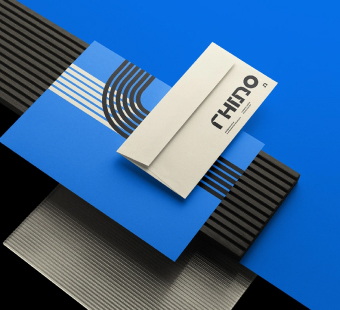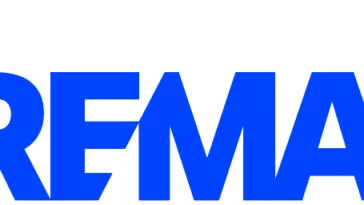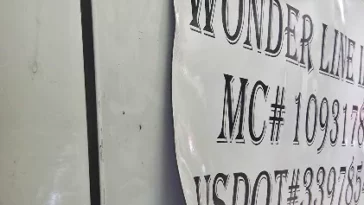In the age of digital communication, printing remains an essential part of our daily lives. Whether it’s for work, school, or personal use, having a reliable and budget-friendly printer is crucial. With technology constantly evolving, the year 2024 brings forth a new wave of budget printers that offer impressive features without breaking the bank.
-
HP OfficeJet Pro 8025e
The HP OfficeJet Pro 8025e is a versatile all-in-one inkjet printer that combines affordability with functionality. It offers a range of features, including wireless connectivity, automatic duplex printing, and an intuitive touchscreen interface. With HP’s ePrint technology, you can easily print from your mobile device, making it ideal for both home and small office use. The OfficeJet Pro 8025e’s Instant Ink compatibility can help you save on ink costs, making it a budget-friendly option for those with high printing needs.
-
Epson EcoTank ET-2720
The Epson EcoTank ET-2720 is a standout choice for those looking to save on long-term printing costs. Unlike traditional inkjet printers, the EcoTank series uses refillable ink tanks instead of cartridges. This means you can print thousands of pages before needing to refill, making it incredibly cost-effective over time. The ET-2720 offers wireless connectivity and decent print speeds, making it a practical choice for both home and small office users.
-
Brother HL-L2350DW
If you’re in the market for a budget-friendly monochrome laser printer, the Brother HL-L2350DW is an excellent option. It’s compact, easy to set up, and offers fast printing speeds of up to 32 pages per minute. The printer supports automatic duplex printing and has wireless connectivity for convenient use. Its affordable toner cartridges make it a cost-effective choice for those who primarily print text documents.
-
Canon PIXMA TR4520
The Canon PIXMA TR4520 is an affordable all-in-one inkjet printer designed for home and small office use. It features wireless printing capabilities, automatic duplex printing, and a compact design that won’t take up too much space in your workspace. This printer also supports mobile printing and scanning, making it a versatile and budget-friendly choice for everyday tasks.
-
Epson WorkForce Pro WF-4830
For those seeking a more robust inkjet all-in-one printer with advanced features, the Epson WorkForce Pro WF-4830 is a budget-friendly yet high-performance option. It offers fast printing speeds, automatic duplex printing, and a large touchscreen control panel for easy navigation. This printer is ideal for small businesses or home offices with moderate to heavy printing needs.
-
HP LaserJet Pro MFP M148fdw
The HP LaserJet Pro MFP M148fdw is a multifunction monochrome laser printer that offers exceptional value for its price. It supports fast printing and scanning, wireless connectivity, and automatic duplex printing. This printer is perfect for small offices or individuals who require reliable, high-quality monochrome printing without breaking the bank.
-
Brother DCP-L2550DW
The Brother DCP-L2550DW is another excellent monochrome laser all-in-one printer designed for budget-conscious users. It provides wireless connectivity, automatic duplex printing, and a compact footprint. This printer is known for its reliability and cost-effective printing, making it a popular choice for home and small office environments.
-
Canon PIXMA G6020
The Canon PIXMA G6020 is part of Canon’s MegaTank series, which offers a unique approach to inkjet printing. It features refillable ink tanks that can print thousands of pages before needing a refill. This makes it one of the most cost-effective options for users with high printing demands. The PIXMA G6020 also offers wireless connectivity and scanning capabilities, making it a versatile choice for various printing needs.
In 2024, budget-conscious consumers have a wide range of printer options to choose from, each catering to different needs and preferences. Whether you need an all-in-one inkjet printer for versatile use or a monochrome laser printer for high-speed text printing, there’s a budget-friendly option available. With the right choice, you can enjoy the convenience of printing without worrying about breaking the bank on printer costs or ongoing consumables. Evaluate your specific requirements, consider factors like printing speed and quality, and choose the best budget printer that suits your needs in 2024.
“ In 2024, budget printers prove that you don’t need deep pockets to make a lasting impression on paper.”
Large Format Printers vs. Small Format: Choosing the Right Printing Solution
In the world of printing, one size certainly does not fit all. When it comes to choosing between large format printers and small format printers, businesses and individuals must carefully consider their specific needs and priorities. These two categories of printers cater to distinct requirements, offering different capabilities, advantages, and limitations. In this article, we will delve into the comparison between large-format and small-format printers to help you make an informed decision based on your unique printing demands.

Understanding the Basics
Before we dive deeper into the comparison, let’s clarify what large-format and small-format printers entail:
Small Format Printers:
Small format printers, often referred to as desktop printers, encompass a wide range of devices designed primarily for standard-sized paper, typically letter or legal size (8.5 x 11 or 8.5 x 14 inches). They are commonly found in homes, small offices, and businesses for everyday document printing needs. These printers are compact, affordable, and versatile, making them suitable for tasks such as printing text documents, photos, and graphics. They come in various types, including inkjet, laser, and all-in-one (print, scan, copy) models.
Large Format Printers:
Large format printers, on the other hand, are engineered to handle paper sizes larger than standard letter and legal dimensions. They are specifically designed for printing wide-format documents, such as posters, banners, architectural blueprints, engineering drawings, and high-quality graphics. Large format printers are typically used in industries like advertising, architecture, engineering, and fine art, where the need for larger prints with superior detail and color accuracy is paramount. These printers can range from 18 inches to over 100 inches in width and are available in various technologies, including inkjet and electrostatic.
Pages vs Leaf: Online printing businesses use a number of phrases and terms that you may not be familiar with. Will you require printing on single-sided pages or double-sided print? You will find that some printing companies use the term leaf for a single sheet of paper and page will refer to a side of the paper.
Comparing the Key Factors
Now, let’s explore the critical factors to consider when comparing large-format printers to small-format printers:
1. Printing Size:
The most obvious distinction is the printing size. Small format printers are designed for standard-sized documents, while large format printers excel in producing oversized prints. The choice depends on your specific requirements. If you need to print brochures, flyers, or standard office documents, a small format printer is sufficient. However, if you work in an industry that requires large posters, banners, or technical drawings, a large-format printer is essential.
2. Print Quality:
Large format printers often deliver superior print quality, especially when it comes to color accuracy and detail. They use advanced inkjet technologies that can reproduce intricate designs and vibrant colors. Small format printers can produce high-quality prints for standard-sized documents, but large format printers are the go-to choice for professional graphics, art reproductions, and architectural drawings where precision matters.
3. Speed and Efficiency:
In general, small format printers tend to be faster for everyday document printing. They are optimized for quick text and image output. On the other hand, large format printers prioritize print quality over speed. Printing large, detailed images takes time, and these devices may not be as efficient for high-volume, small-sized document printing.
4. Cost of Operation:
Small format printers are typically more cost-effective when it comes to consumables like ink or toner cartridges and paper. Large format printers, especially those used for high-quality graphics, can be expensive to operate due to the large volumes of ink or toner required, as well as specialized media.
5. Versatility:
Small format printers offer greater versatility in terms of everyday tasks. They can handle a variety of paper sizes, print envelopes, and produce high-quality text and photo prints. Large format printers, while exceptional for their intended purposes, are less versatile in terms of the range of tasks they can perform.
6. Space Requirements:
Small format printers are compact and can easily fit on a desk or in a small office space. Large format printers, due to their size, require a dedicated area with ample room for the machine and the printed materials.
7. Industry and Application:
Consider your industry and the specific applications you require. Large-format printers are essential tools for architects, engineers, graphic designers, and advertising professionals. Small format printers are suitable for offices, homes, and businesses with standard document printing needs.
Making the Right Choice
The choice between a large format printer and a small format printer ultimately depends on your printing needs and priorities. Small format printers are versatile, cost-effective for standard-sized documents, and well-suited for everyday tasks. Large format printers, on the other hand, excel in producing high-quality, oversized prints required by industries such as advertising, architecture, and design.
In many cases, businesses and individuals may find value in having both types of printers to cover a wide range of printing tasks efficiently. This dual setup allows you to enjoy the flexibility of small-format printing while having the capability to produce large-format prints when needed.
Ultimately, whether you choose a large format or small format printer, it’s essential to assess your specific requirements, budget constraints, and long-term goals to make an informed decision that aligns with your printing needs in 2024 and beyond.



